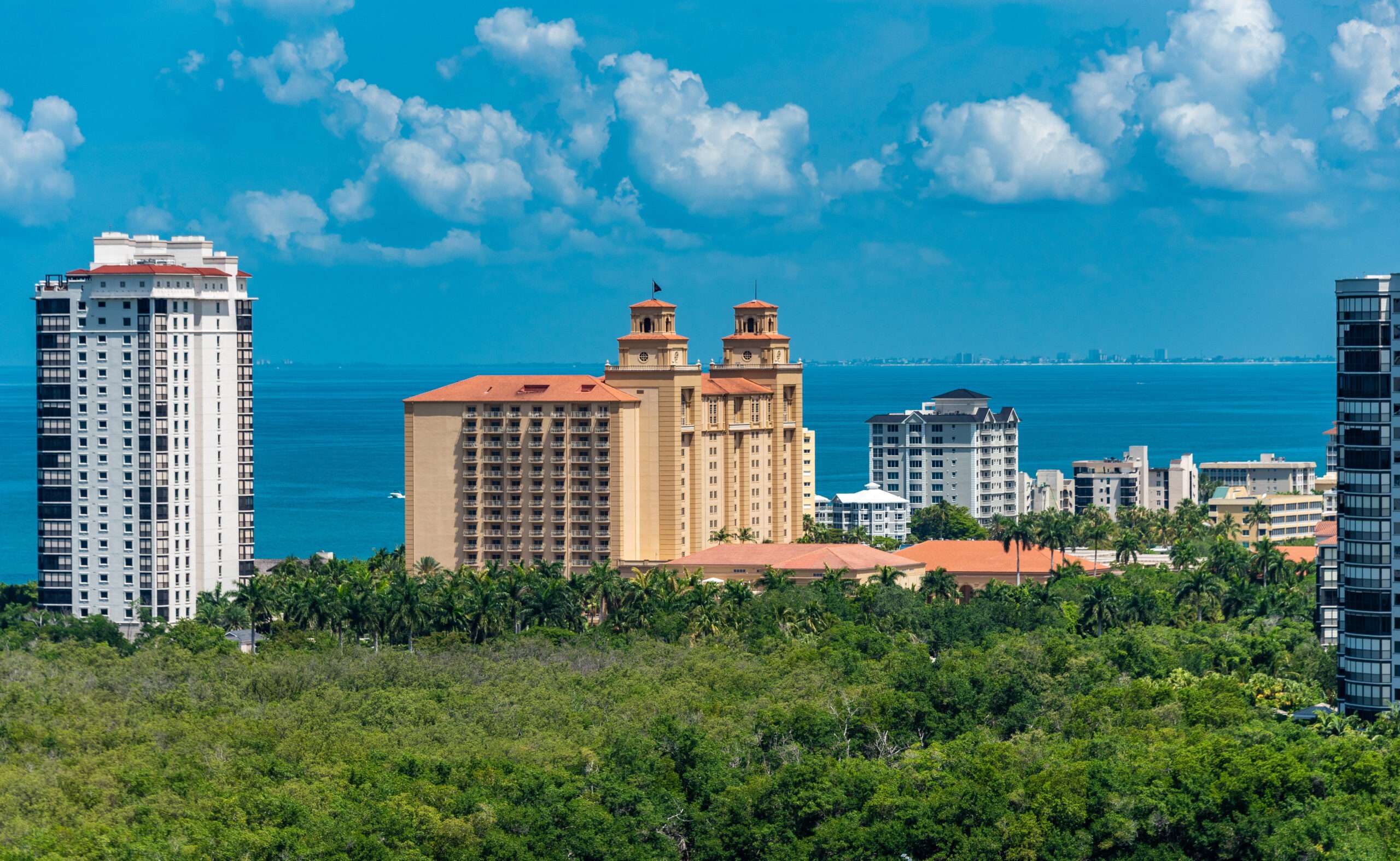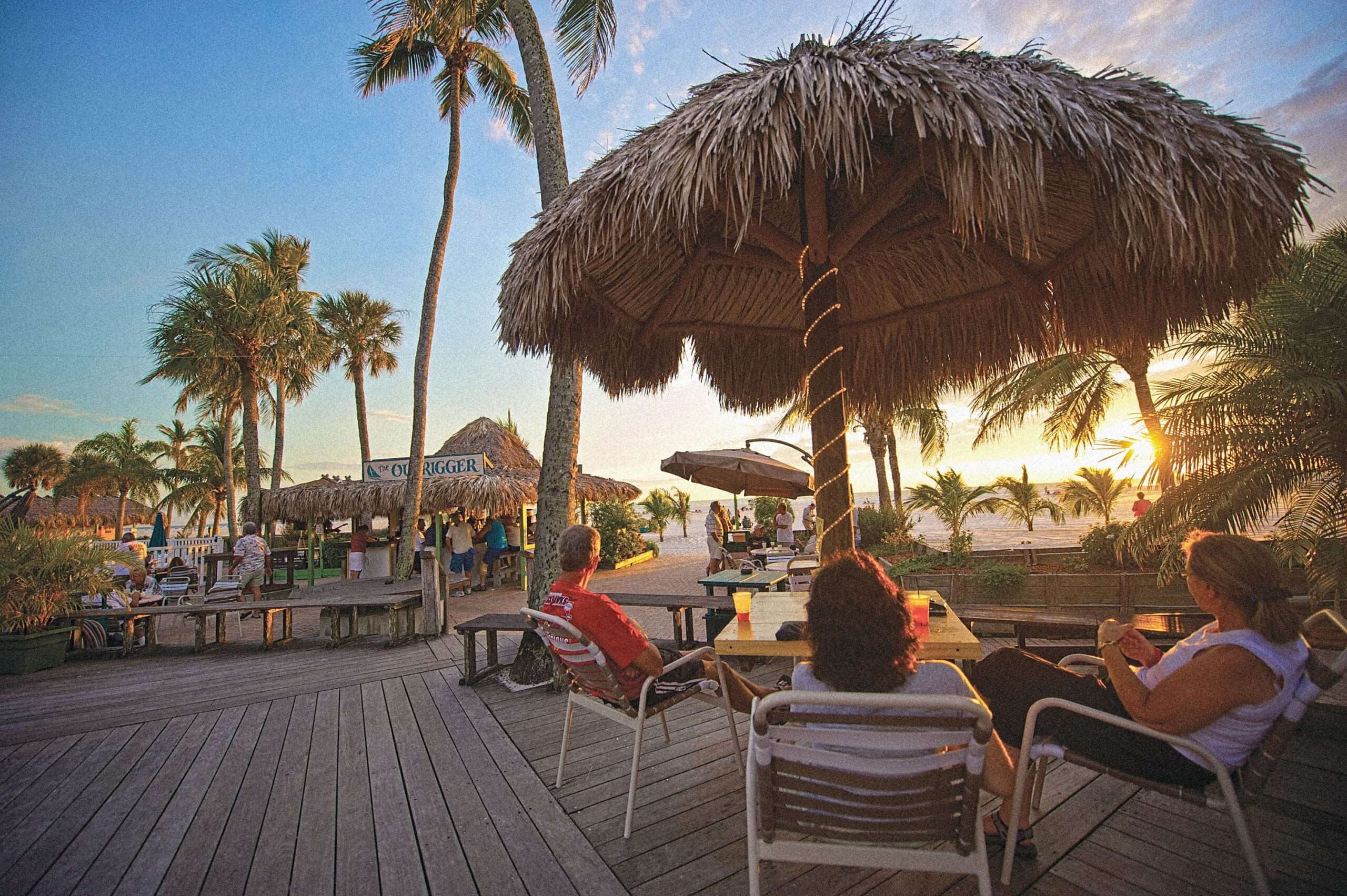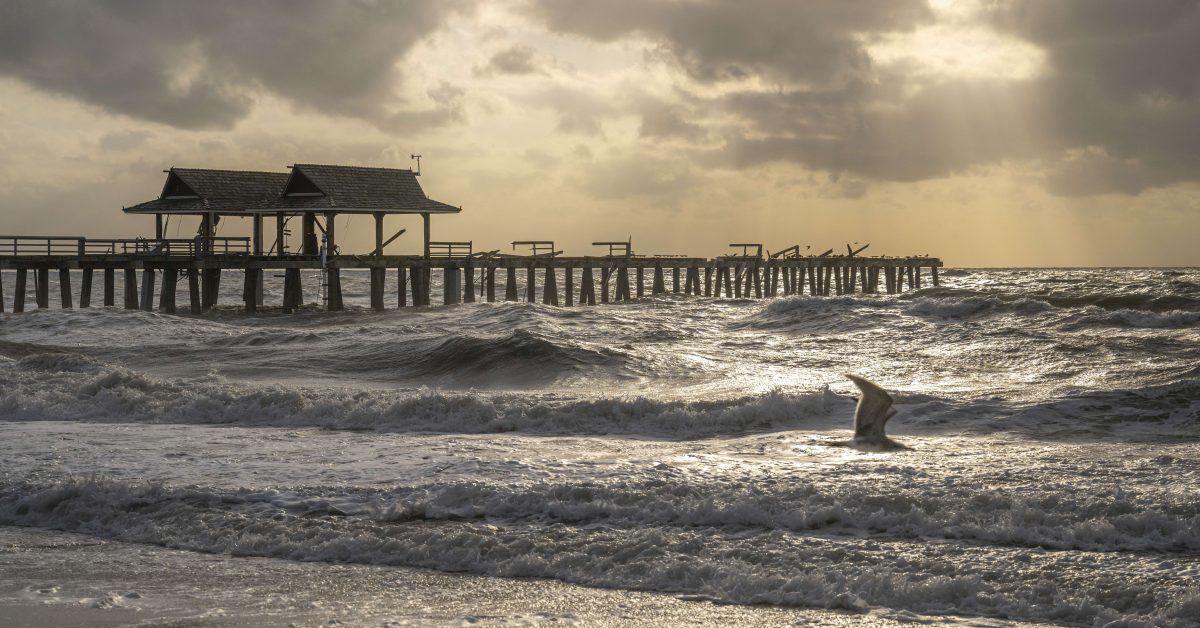Tourist season wasn’t supposed to be this way.
Coming off a record-setting year for air traffic flowing into both Southwest Florida International Airport and Punta Gorda Airport, plus a record-setting year for generating tourist tax revenue in Lee County, 2023 seemed poised to break those records again.
The country had largely relearned how to live under the backdrop of COVID-19, and by many metrics tourism had exceeded pre-pandemic levels.
The Boston Red Sox were supposed to get back on track with their first uninterrupted and normal spring training season since 2019. They were hoping to renew their sellout streak at the Fenway South complex. The Minnesota Twins were supposed to pack their own stands across town at Hammond Stadium.
Spring breakers would be flocking back to the Lani Kai Island Resort on Fort Myers Beach once again. Other hotels and restaurants would be full, from Marco Island and Naples on north to Port Charlotte and Punta Gorda and all parts in between.
Hurricane Ian blew away those expectations over an eight-hour stretch on Sept. 28.
With thousands of hotel rooms and dozens of restaurants no longer existing, Southwest Florida tourism took on a different tone following Hurricane Ian. The storm wiped out more than 30% of Lee County’s hotel rooms.
“We have to be realistic,” says Tamara Pigott, the executive director of the Lee County Visitor and Convention Bureau. “We had a major hurricane. The rebound is happening. The visitors want to come. The visitors who have come back, want to come back again. That’s the good news. How people feel when they come here—how it feels to them, the experience that they have—is what drives them back.
“But the majority of the rooms that are gone were on a white, sandy beach. That’s a challenge for us.”
 Flights not soaring
Flights not soaring
Air traffic at RSW plunged during tourist season. For the first time in 40 years, when the record book opened, air traffic declined from September to October during the same year. It also dropped by 16% from one year prior, from 515,077 to 432,667 passengers.
Year-over-year passenger percentages dropped at RSW during a six-month stretch, a statistical rarity only seen during the onset of COVID-19 in 2020, in the months following Sept. 11, 2001, and at the peak of the Great Recession in 2008-09. In 2022, November (-18%) and December (-20%) saw double-digit year-over-year percentage decreases. In 2023, the same held true for January (-11%), February (-16%) and March (-23%).
The Punta Gorda Airport fared much better in the immediate months after Hurricane Ian. In 2022, November (-17%) and December (-3%) saw much lower percentage decreases than RSW. In January (+16%) and February (+1%), PGD actually had percentage increases in passenger counts from 2022 before being hit with a decrease in March (-6%).
Yet James Parish, the chief executive officer of the Punta Gorda Airport, still expected 2023 numbers to slightly surpass last year’s record.
The opening of the 785-room Sunseeker Resort Charlotte Harbor in October should alleviate any room shortage problem in Charlotte County.
“We still had record numbers,” Parish says. “But we would have been well above those record numbers. We’re on pace to make up for our losses this year. It’s the lack of hotel space, which is going to be resolved in a couple of months. And there has been a shortage of pilots and a shortage of crews.”
 Spring training figures drop
Spring training figures drop
The Boston Red Sox and Minnesota Twins attendance figures mirrored the airport numbers.
The Twins had 17 Grapefruit League home games this year, drawing an average of 6,089 fans, the team’s smallest average turnout in 10 years, with about 35% of the seats empty on any given day.
“Attendance was down,” says John Martin, who as owner of the Fort Myers Mighty Mussels minor league baseball team, manages ballpark operations for the Twins during spring training. “When we looked at it through the scope of when we had full spring training, it took us back to 2017, ’18 and ’19.”
That’s because in 2020, COVID-19 cut the season short. In 2021, the pandemic prompted Major League Baseball to reduce attendance. And in 2022, MLB locked out players until a collective bargaining agreement could be reached, shortening the spring season.
“To get a real comparable, we’ve got to go back five or six years, and the world was a different place,” Martin says. “With my analysis, I was really pleased with spring training this year. Our average attendance per game was up. We got the entire schedule in. We had zero rainouts. It was an unmitigated success. It felt like this was a step closer to getting back to normal. With next year’s spring training, we would expect to get back to 2017, ’18 and ’19 numbers. Our experience was, it felt very successful and very much better than 2022 from my perspective.”
The Red Sox also had 17 Grapefruit League home games, averaging 8,452 fans per game, which was the team’s lowest mark since 2011, the final year of the team training across town at City of Palms Park. About 22% of the seats were empty on any given day. From 2011 through 2020, when spring training games were canceled because of the pandemic, the Red Sox had sold out 145 consecutive games.
“There were some different economic factors all of us were facing here in the region,” says Shawn Smith, the new general manager of Florida operations for the Red Sox. “This was the first time in all four years that we had a ‘normal’ spring training. We were thrilled with the way the community responded.”
The loss of so many beach area hotel rooms clearly affected attendance, Smith said.
“It certainly has a trickle-down effect,” he says. “It affects the restaurants. It affects other businesses. It was devastating. It certainly had an effect on out-of-state visitors to be able to come here and have a place to stay. You have some Red Sox fans who couldn’t come down because it was a challenge to find hotel rooms or Airbnbs. And you had people who lost their homes and needed other places to stay.”
 Bed tax numbers nosedive
Bed tax numbers nosedive
Hurricane Ian made its biggest impact on the tourist season by squashing the typical returns for bed taxes, especially in Lee County, where tourism tax revenue fell by almost 50% in the first March following the storm.
Revenue dropped from $11.3 million last year—the record for the month of March—to about $5.6 million this year, a gap of about $5.7 million. That 50% plunge was more than twice the 23% drop in airport passenger numbers. Robert Wells, the vice chair of the Lee County Tourist Development Council and also the owner of Cabbage Key and Tarpon Lodge, explained why.
“It’s almost dizzying looking at all the different numbers that you see out there,” Wells says. “But I think to the point as to why you are seeing such big factors, one is occupancy, and the other is what you’re actually charging for a room. If your room rate is going down, or if a property that charges more per available room goes down versus one that charges maybe a little less—the combined lack of occupancy and lower room rate will bring those tax dollars down at an even greater rate than what you first thought.”
The average daily room rate in Lee dropped by 15.4% to $246.51 in March. Occupancy fell by 6% to 80.2%. RevPAR, a metric that stands for revenue per available room, dropped by 20.5% to $197.69.
“In Lee County, unfortunately, so many of the coastal properties were out of service and continue to be in many cases,” Wells says. “That’s going to continue to weigh on the overall county results that you’re going to see in bed tax collection.”
In Collier County, about $6.3 million in tourist tax revenues were collected in March, for once more than neighboring Lee to the north. Those numbers were down, but just by 1.65% compared to one year prior.
“We did see some significant slippage during the month of March,” says Paul Beirnes, the tourism director for Collier County. “Everybody in March saw an interesting sort of wobble. There’s no one silver bullet; it’s a combination of a lot of things.”
Those things weren’t just related to Hurricane Ian damage, either, Beirnes said. Only about 750 rooms were still down in March in Collier County, but they were luxury hotels and big revenue generators.
“During March, we had red tide that was knocking on our door,” Beirnes says. “There was also a tremendous amount of random things that were going on that we have determined certainly took away from that Florida positivity. We referred to it as Florida fatigue. There were a lot of boycotts going on. We have an open carry law that’s emerging in Florida. There are some very politically incensed individuals. The month of March was just a weird wobble.”
In Charlotte County, bed tax collections went down in March, but only by 15%. And in October, November, December and January, revenues actually rose in each of those months from one year prior, because the hotels, built post-Hurricane Charley, weathered Hurricane Ian well and were busy with those in need of shelter.
Charlotte County lost about 20% of its rooms to Ian, as compared to Lee County’s 31%.
“Recovery workers are leaving the area more and more each month,” says Sean Doherty, the tourism director for the Charlotte Harbor Gulf Island Coast, which includes Punta Gorda and Englewood Beach. “The cancellation of several sporting events, including Tampa Bay Rays spring training—we’ve seen a drop in TDT [Tourist Development Tax] in both February and March. Having said that, I’m not overly concerned at this point, as we are back to having our second-highest year on record for collections, and we’re expecting a significant portion of the nonoperational rooms back online fairly soon. And on top of that, Sunseeker Resort is on track to open this fall, which will be a huge game-changer for us.”
Long road back to normal
Other than day trippers heading to Fort Myers Beach, spring break didn’t happen in 2023. Melissa Schneider, the marketing director for the Lani Kai Beach Resort, hopes that changes in 2024. But if it does, it will be scaled back.
“It’s a crawl before a walk,” Schneider says. “I think the island can definitely host spring break again. It will definitely be more scaled down. It will definitely be more chill. But I definitely think that’s possible.”
The resort hopes to have some of its rooms operational by the 2023-24 tourist season, she said, when the metrics are bound to start bouncing back.
“As you know, it’s been very tough since the storm,” Schneider says. “The people on the island have been working very hard. Of course, there was no spring break on Fort Myers Beach. But it was so heartwarming to see people coming out to support the few businesses that were open on the island.
“Our team keeps working hard, trying to get different parts of our hotel up and running. It does warm the heart to see more and more places open in some capacity. And more people returning to the island. In the coming year, we’re going to keep working hard. We hope to have a bar, maybe a restaurant open. Maybe some rooms available. We’re just taking it one step at a time and just staying positive. A lot of that positivity comes from heartfelt comments and messages. It fuels us to continue pushing forward.”
Bed taxes falling
Charlotte, Collier and Lee counties’ bed tax collections have been down for the most part since Hurricane Ian wiped out many coastal hotels, especially in Lee. Here’s a month-by-month look of tourist season bed tax revenue and the year-over-year percent decreases (or, in a few instances, increases).
October
Charlotte County: $440,189 (+23%)
Collier County: $1.9 million (-6.3%)
Lee County: $1.9 million (-40%)
November
Charlotte County: $469,913 (+13%)
Collier County: $2.4 million (+4.5%)
Lee County: $2.4 million (-39%)
December
Charlotte County: $614,798 (+2.8%)
Collier County: $2.6 million (-9%)
Lee County: $2.9 million (-45%)
January
Charlotte County: $963,143 (+.05%)
Collier County: $3.7 million (-17%)
Lee County: $4.3 million (-45%)
February
Charlotte County: $905,395 (-7.8%)
Collier County: $5.4 million (-9%)
Lee County: $4.3 million (-46%)
March
Charlotte County: $1.1 million (-14%)
Collier County: $6.4 million (-1.6%)
Lee County: $5.7 million (-50%)
Flying not so high
While setting records for passenger counts in 2022, managers of the Southwest Florida International Airport and Punta Gorda Airport had to contend with plummeting passenger counts during tourist season. Here’s a look at the year-over-year passenger count decreases (and increases) for both airports from November 2022 through March 2023, the 2022-23 tourist season.
November
RSW: 812,305 (-18%)
PGD: 124,718 (-17%)
December
RSW: 862,368 (-20%)
PGD: 175,555 (-3.4%)
January
RSW: 932,896 (-11%)
PGD: 173,911 (+16%)
February
RSW: 967,416 (-16%)
PGD: 182,829 (+1%)
March
RSW: 1,166,442 (-23%)
PGD: 234,515 (-6%)
 Crunched by the numbers
Crunched by the numbers
While significant progress has been made since Hurricane Ian, the future of Fort Myers Beach remains uncertain. Despite a steady pattern of businesses in town reopening, Ian took more than structures and icons; it took away stability of the tourism industry, which drives the area’s economy.
As of March 7, 9,825 hotel rooms, which is 68.6% of the pre-Hurricane Ian inventory, are open in Lee County, according to the Lee Visitor and Convention Bureau. The remaining 32% of hotel rooms can be attributed to the loss of inventory on the barrier islands, including Fort Myers Beach.
Pink Shell Beach Resort & Marina is one of the few to reopen, housing both FEMA families and vacationers.
So far in 2023, Pink Shell is 50% operational and has experienced a 70% decrease in revenue. General Manager Bill Waichulis said the revenue decrease translates to more than a $25 million loss.
In comparison, Pink Shell experienced a 17% decrease in revenue during the COVID-19 pandemic.
Waichulis has managed Pink Shell for nearly 20 years, seeing the effects of COVID-19, the BP oil spill and the red tide event of 2018.
“I went back and looked at all the events,” he says. “I can tell you Ian was the worst by far. If you took all three islands and that magnitude of impact on jobs [and] income, it’s just a tremendous hit.”
The hotel industry is feeling that hit especially hard, since inventory is scarce and those that are open have limited services and amenities.
Due to those limitations, transparency with guests is top priority for Pink Shell. As of April, some elevators are out of service, the pools are closed and daily construction and painting is happening on-site.
“We’re upfront with them, but what we’re selling them is the weather and shelling is fantastic, the beach is not crowded, the sunsets and view haven’t changed and you’re seeing rates right now that you’ll probably never see again,” Waichulis says.
Between April and May, Pink Shell charged 50% to 70% less than its usual rates. Waichulis said if people remain willing to visit knowing the limitations, they are directly contributing to the rebuilding of Fort Myers Beach.
“Every month, you’re getting another business on the beach kind of opening,” he says. “But they’re only going to sustain being open if we have vacationers here. It’s just the grim reality and I think the traveler understands that.”
The devastation on Fort Myers Beach caused insurance increases and exacerbated the labor cost and workforce housing issues.
“Business loss is just not fathomable,” Waichulis says. “You would’ve never thought you would’ve seen something like this and you don’t insure for it. A lot of businesses like us, we insured for a 500-year storm and you get an over 1,000-year storm. Your insurance dollars only go so far.”
Pink Shell’s insurance increased by 250% in 2023, Waichulis said. “We’re going to have to somehow pass those expenses on to the consumer and give them a product that they’re going to want to return to every year,” he says. “That’s the challenge.”
Labor costs will also continue to increase, along with the need for workforce housing. Since Ian, Pink Shell went from 330 employees to 110.
“We’re just a small part of that, but if you take every hotel and restaurant on the islands and add that together, you can see the amount of potential jobs that were lost,” Waichulis says. “You have a lot of people that had to move out of the area just to find employment because of the number of businesses being closed.”
About 10% to 15% of Pink Shell employees lived on the island pre-storm, but now, Waichulis said he doesn’t have any employees that live on the island.
“A lot of my employees rented before they got pushed out by Airbnb and Vacation Rentals by Owner,” he said. “Now, those cottages aren’t going to be Airbnb or Vrbo, they’re going to be million-dollar houses that are second homes.”
Despite the challenges, Waichulis is optimistic that 2024 will be a good year, especially considering the pent-up demand for hotels.
Pink Shell had newer construction in comparison to others, with older or lower-level buildings ultimately being further behind in rebuilding. Not only are hotels in low inventory, but so are vacation rentals on the beach.
“All those 1950s cottages that people Airbnb or Vrbo are gone,” Waichulis says. “I think you have a supply and demand issue that will be good for the businesses that are able to open. Most of the money that we make in the hotel business here is January through April. So being open and fully ready for next season is important for us.”
While the future remains uncertain, Pink Shell, along with other businesses on Fort Myers Beach, can only rebuild and assimilate as time goes on.
“I’ve been through a couple of these hurricanes and it’s not a sprint, it’s a marathon,” Waichulis says. “You’ve got to pace yourself as a marathon. Our goal right now is to focus on getting more facilities up and really getting the resort fully up by the end of the year, and not lose a ton of money doing it.”
— Katiuska Carrillo





